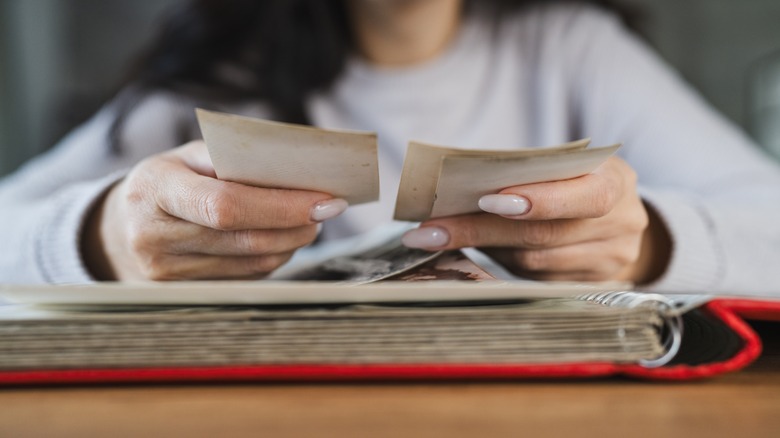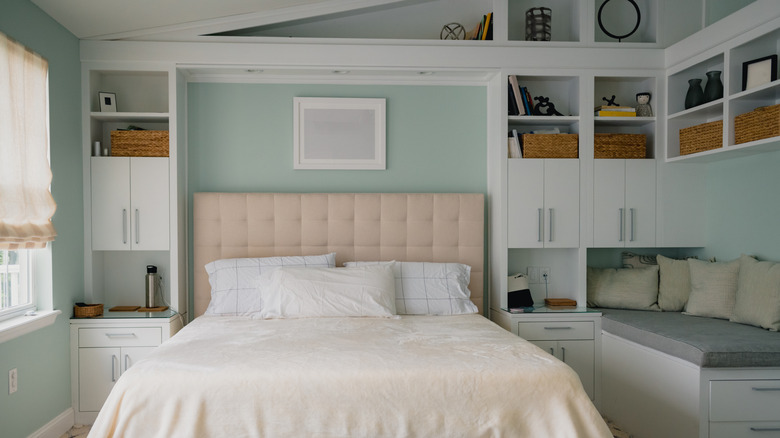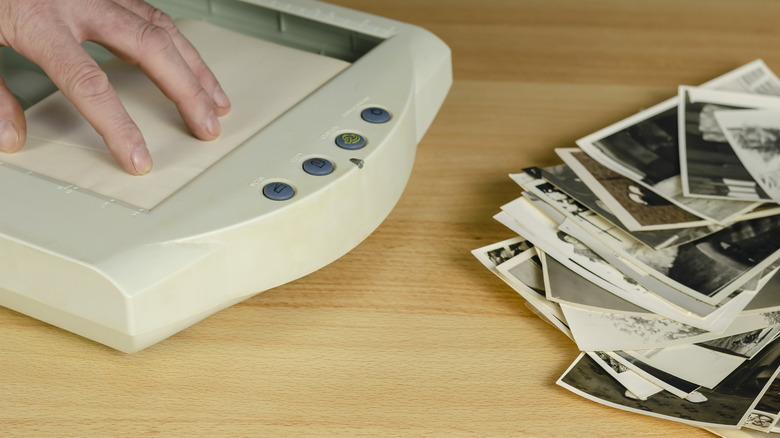You've Been Storing Your Photo Albums All Wrong. Here's Where They Should Go
Photos capture single moments in time, forever saved on a little piece of paper. But you could risk losing those physical reminders of your favorite people, places, and events if you don't store your images properly. Printed photos deteriorate easily when they're stored in improper conditions. Humidity, heat, and UV light are three particularly damaging elements that destoy your photos. Stuffing your photos in your attic, basement, garage, or non-climate-controlled storage units could leave you with a disappointing surprise when you retrieve them. It's also best to avoid sunny areas.
UV light fades and yellows your photos, so the once crisp, clear images lose their clarity over time. Heat could cause your photos to separate, essentially destroying the image. Heat damage can't be repaired. Fluctuations between extremely hot and cold temperatures, like what your photos might experience in a garage or attic, can lead to fading and cracking. Humidity can also damage photos with high humidity potentially creating mold growth, fading, and oxidation. Low humidity below 30% could leave you with brittle photos.
Another factor that is more likely to be an issue in an attic, garage, or basement is pests. Insects and rodents alike will chew through your memories like they're a tasty treat. Even if you don't think you have an issue, your pest infestation may be a bigger problem than you think. Unwanted pests know how to hide well, so you might not realize your storage spaces have infestations.
Where you should store your photos instead
The ideal spot is a location that eliminates exposure to extreme temperatures, humidity, pests, and UV light. Ideal conditions include cool temperatures in a dark, dry spot. In many homes, that is a home office or bedroom. Avoid storing them near your bathroom or kitchen, even if they're outside of those high-humidity areas. The excess moisture and heat could still reach the photos, and pipes running through the walls could leak near your photos. An ideal spot within your chosen room is high on a storage shelf, whether that's a bookcase, built-in storage, or a shelf in the closet. The higher location could help keep the photos dry if your home floods.
Wherever you store your photos, it should be consistent and stable when it comes to humidity levels and temperatures. Using a dehumidifier in the room or installing a whole-house dehumidifier evens out the moisture levels in your home throughout the year. Keep your photo albums away from heat vents, fireplaces, and other sources of heat, which could direct hot air at your photos and cause damage.
Before you move your collection to their new, climate-controlled storage spot, take time to declutter and organize old photos you're not ready to part with. Check for damage and identify particularly delicate photos that may need extra care. Making a digital copy of the photo helps preserve it before it deteriorates even more.
More tips for protecting your photos
If you have lots of older photos that were taken before digital cameras were popular, digitizing them is an effective way to preserve them. Even if you store your photos in ideal conditions, they could still deteriorate over time, especially if they're already in poor condition. Natural disasters could also destroy your photos. To digitize them, scan your photos using a scanner, multipurpose printer, or photo-scanning phone app. You can also pay to have a professional digitize your photos. Once you've converted them to digital memories, store them in at least two spots. Your phone or computer that you use for digitizing is your first location. Then, share them to other devices. Finally, save the photos to the cloud in case your devices are destroyed or become corrupted.
You can keep your memories organized and safe with a photo storage box instead of photo albums as long as the box is archival-quality and acid-free. All products that touch your photos should be specially designed without acids to avoid speeding up the deterioration process. Avoid using rubber bands or other fasteners to secure the photos together. Use caution when you have a stack of photos together as exposure to moisture, heat, or other poor conditions could cause them to stick together. Many plastic products can be damaging to photos, so it's best to avoid zip-top baggies and other types of plastic containers unless they're designed specifically for photo storage.


